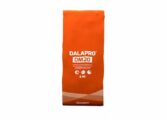Black Friday Offers: The Ultimate Guide

Black Friday Offers: An In-Depth Overview
Introduction:

Black Friday, the day after Thanksgiving, has become synonymous with incredible deals and discounts across various retail sectors. It marks the beginning of the holiday shopping season, with retailers offering attractive Black Friday offers to entice shoppers. In this article, we will provide a comprehensive analysis of Black Friday offers, delving into their types, popularity, quantitative measurements, variations, and historical pros and cons. So, let’s dive into the world of Black Friday shopping!
Understanding Black Friday Offers
Black Friday offers encompass a wide range of deals and discounts presented by retailers. These promotions are designed to attract consumers and boost sales before the holiday season. While Black Friday initially focused on brick-and-mortar stores, the rise of e-commerce has made online offers equally prominent. Let’s explore the different types of Black Friday offers:
1. Doorbuster Deals:
Doorbuster deals are highly sought-after offers that retailers use to draw customers into their physical stores. These limited-time deals usually involve deep discounts on high-demand products, such as electronics, appliances, or clothing. Shoppers often line up outside stores overnight to secure these deals.
2. Online Exclusive Offers:
With the surge in online shopping, retailers have capitalized on Black Friday by offering exclusive discounts online. These offers can range from site-wide discounts to flash sales and free shipping. The convenience and accessibility of online shopping have made online exclusive offers increasingly popular.
3. Bundle Deals:
Some retailers create value bundles by packaging multiple related products together at a discounted price. For example, a gaming console bundled with games and accessories. Bundle deals aim to provide substantial savings while enticing customers to purchase complementary items.
Quantitative Analysis of Black Friday Offers
To gauge the effectiveness of Black Friday offers, analyzing quantitative measurements is crucial. Here are some key metrics commonly used:
1. Sales Revenue:
Retailers track the overall sales revenue generated during the Black Friday period. This metric highlights the impact of the offers on their bottom line and helps identify successful product categories.
2. Conversion Rate:
The conversion rate measures the percentage of website visitors who made a purchase. A higher conversion rate indicates effective offers and compelling deals that motivated visitors to become customers.
3. Average Order Value (AOV):
AOV calculates the average amount spent per order. If Black Friday offers lead to higher AOV, it suggests that customers are taking advantage of bundled deals or purchasing higher-priced items.
4. Customer Lifetime Value (CLTV):
CLTV estimates the total value a customer brings to a business over their entire relationship. Tracking changes in CLTV during Black Friday can provide insights into the long-term profitability of acquiring and retaining customers through offers.
Variations in Black Friday Offers
Black Friday offers can vary extensively, even within the same product category or retailer. Understanding these variations is crucial for shoppers seeking the best deals. Here are some factors that differentiate Black Friday offers:
1. Discounts:
Discounts can range from modest percentage-offs to substantial markdowns. Some retailers offer tiered discounts, with higher savings on higher-priced items. Additionally, limited-time flash sales may feature more significant discounts.
2. Product Availability:
While Black Friday offers are enticing, availability can be limited, particularly for doorbuster deals. Retailers may only have a few units of a heavily discounted item, leading to competition and potential disappointment for some shoppers.
3. Exclusions and Limitations:
Retailers may exclude specific brands, products, or categories from their Black Friday offers. Additionally, limited stock or set quantities per customer can limit the accessibility of certain deals.
Historical Pros and Cons of Black Friday Offers
Over the years, Black Friday offers have evolved, and opinions regarding their advantages and disadvantages have emerged. Let’s explore the historical pros and cons of this shopping phenomenon:
Pros:
1. Significant Savings: Black Friday offers often provide substantial discounts, allowing consumers to purchase desired items at discounted prices.
2. Kick-starts Holiday Shopping: Black Friday serves as a jumpstart for holiday shopping, enabling customers to check off their gift lists at a discounted rate.
3. Excitement and Thrill: The anticipation and excitement surrounding Black Friday create a unique shopping experience, particularly with doorbuster deals and limited-time offers.
Cons:
1. Overspending: The allure of Black Friday offers can lead to impulsive buying and overspending, potentially causing financial strain.
2. Crowds and Chaos: In physical stores, the rush of Black Friday can create chaotic scenes, with long lines, crowded aisles, and limited parking space.
3. Limited Stock Availability: The limited quantities available for heavily discounted items can result in frustration and disappointment for consumers who miss out.
Conclusion:
Black Friday offers provide consumers with an opportunity to save money while embarking on their holiday shopping journey. Understanding the various types of offers, quantitative measurements, variations, and historical pros and cons can help shoppers make informed decisions. As Black Friday continues to evolve, it remains a significant event in the retail industry, shaping consumer behavior and driving sales.
















































